Features
Here you’ll get to read interviews with Hidden Shoal artists and other folk we call our friends, see us wax lyrical about our favourite tracks, wrap your ears around artist and label curated mixtapes and a host of other things we haven’t even dreamed up yet. If you’d like to keep up to date with Featured content and can’t rely on your memory then subscribe via our RSS Feed.
Enjoy!
Featured Track – perth ‘Sunday Stroll’
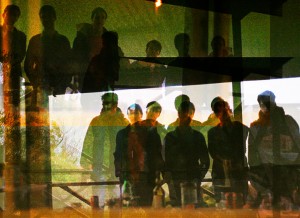 This is a track from an album with nothing but great tracks, but in some ways it’s one of the more immediately unassuming little numbers. As with so many great songs, it expands over multiple listens, and in this case becomes an incredibly affecting and moving piece of ambient-electronica. Whether it’s on big psych-pop builders like single ‘Drank Kites and Tomorrow’ or intimate little memory boxes like our featured track ‘Sunday Stroll’, perth invest their music with a wonderful sense of melody, atmosphere and structure. In one light, ‘Sunday Stroll’ could be described as sounding like Plaid making love to Boards of Canada, but in its fullness it’s uniquely, inimitably perth. This is a song to soundtrack your memories.
This is a track from an album with nothing but great tracks, but in some ways it’s one of the more immediately unassuming little numbers. As with so many great songs, it expands over multiple listens, and in this case becomes an incredibly affecting and moving piece of ambient-electronica. Whether it’s on big psych-pop builders like single ‘Drank Kites and Tomorrow’ or intimate little memory boxes like our featured track ‘Sunday Stroll’, perth invest their music with a wonderful sense of melody, atmosphere and structure. In one light, ‘Sunday Stroll’ could be described as sounding like Plaid making love to Boards of Canada, but in its fullness it’s uniquely, inimitably perth. This is a song to soundtrack your memories.
Three Questions With DrAlienSmith
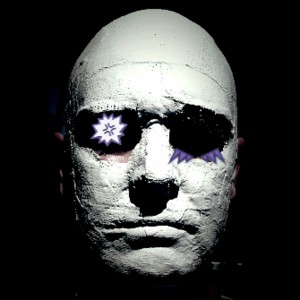 Al Smith (aka DrAlienSmith) plays an important role in the Perth music community. Over the last 15 years he’s worked with more than 300 bands at his Bergerk! Studios, including pivotal Perth outfits such as The Devil Rides Out, Drowning Horse, Abbe May, Eleventh He Reaches London, Claim The Throne and Extortion, as well as Hidden Shoal’s own Tangled Star and The Slow Beings. To add to this impressive list is Smith’s own work under the moniker DrAlienSmith. His debut EP, Under Songs, is testament not only to Smith’s mastery of the studio, but also his wonderful sense of texture, atmosphere and melody. Under Songs‘ monolithic compositions move at a glacial pace and feel like they are shifting the earth under your feet, but rather than alienating the listener, they put you in the driver’s seat and ask you to grip the wheel because it’s a long, long way to the ground. Powerful stuff!
Al Smith (aka DrAlienSmith) plays an important role in the Perth music community. Over the last 15 years he’s worked with more than 300 bands at his Bergerk! Studios, including pivotal Perth outfits such as The Devil Rides Out, Drowning Horse, Abbe May, Eleventh He Reaches London, Claim The Throne and Extortion, as well as Hidden Shoal’s own Tangled Star and The Slow Beings. To add to this impressive list is Smith’s own work under the moniker DrAlienSmith. His debut EP, Under Songs, is testament not only to Smith’s mastery of the studio, but also his wonderful sense of texture, atmosphere and melody. Under Songs‘ monolithic compositions move at a glacial pace and feel like they are shifting the earth under your feet, but rather than alienating the listener, they put you in the driver’s seat and ask you to grip the wheel because it’s a long, long way to the ground. Powerful stuff!
So without further metaphorical musings, we ask Al to reach into the bag and pull out three questions…
What’s one of your favourite albums that’s unlikely to be featured on anyone else’s list of favourite albums, and why do you love it?
That would have to be New Hope For The Dead by Sydney band Kiss My Poodles Donkey. I saw this album in a record store mid 90’s and bought it on the basis of the band name alone. One of those lucky flukes because at the time this album became like a bible to me. It was full of pretty amazing weirdo rock grooves with crazy production and killer lyrics. After a bit of research I found out that the main man behind this band was Chris Townend, a studio producer and engineer who ran Big Jesus Burger studios. He recorded all his own projects in between his other studio jobs and at the time I was a fresh faced studio geek looking to set up my own studio, so this guy was a legend. This album contains the best cover of a Prince song ever, and that’s saying a lot because I can’t stand Prince!
What’s the best show you’ve ever been to?
The first Perth Big Day Out in ’93. My first proper festival ticket with Iggy Pop at the top of his game, Bjork and band on fire, Sonic Youth (my heroes at the time), and then bands like Mudhoney and Nick Cave. All that with only 6000 people (not like the following BDOs, which topped 30,000). It was an amazing and inspiring day.
Build your own dream supergroup.
Tom Waits on vocals, Dave Lombardo on drums, Kim Gordon on bass, Marnie Stern and Tony Iommi on guitar 🙂
Featured Track – Glassacre ‘Tension Agreement’
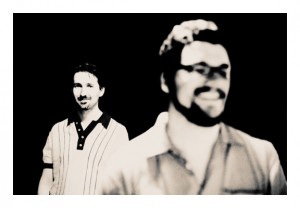 This week’s featured track is a deep cut from our catalogue, delivered by Hidden Shoal’s Tim Clarke. Glassacre‘s debut EP Slow Attack was one of Hidden Shoal’s first releases back in 2006:
This week’s featured track is a deep cut from our catalogue, delivered by Hidden Shoal’s Tim Clarke. Glassacre‘s debut EP Slow Attack was one of Hidden Shoal’s first releases back in 2006:
“The hold that ‘Tension Agreement’ has over me is undiminished in the eight years since its release. There’s a pleasing simplicity to the way all the elements overlap, and Chris’s understated vocal performance just kills me. It’s quite hard to write about how deeply this song affects me, but it makes you feel at home in feeling sad, yet suggests expansiveness beyond the horizon of that feeling. Sublime.”
Three Questions With Chloe March
Chloë March is a songwriting force to be reckoned with. Not necessarily the most obvious way to introduce her gorgeous and delicate music, but more appropriate than it would seem on the surface. March’s ability as a composer and 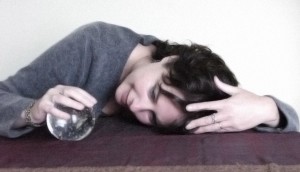 producer sees her create songworlds alive with feeling, shape and colour, and ringing with emotive energy. There is no better testament to this than on the forthcoming re-release of her album Nights Bright Days (4th November 2014), which inhabits musical territory somewhere between art song and folk, dream-pop and electronica, the ambient and the cinematic. March embraces all these influences to create an album full of poetic, emotionally charged and intensely atmospheric songs. It is a thing to behold.
producer sees her create songworlds alive with feeling, shape and colour, and ringing with emotive energy. There is no better testament to this than on the forthcoming re-release of her album Nights Bright Days (4th November 2014), which inhabits musical territory somewhere between art song and folk, dream-pop and electronica, the ambient and the cinematic. March embraces all these influences to create an album full of poetic, emotionally charged and intensely atmospheric songs. It is a thing to behold.
So without further adoration we ask Chloë to reach into the bag and pull out three questions.
Why make music?
It’s so all-encompassing, it engages my brain, my body and my heart all at the same time, which is probably why it feels so good when it’s going well and so awful when it isn’t. I really hope that my music can engage with all or some of those parts of the people who are into it – there’s nothing quite like knowing that you’ve managed to make that connection.
If you were writing a soundtrack/score, what director would you most want to work with?
My dream job would have been scoring Cary Fukunaga’s film of ‘Jane Eyre’ with Michael Fassbender and Mia Wasikowska. It’s one of my favourite books and such a brooding, spacious film with gorgeous bleakly epic melancholy landscapes, fantastic actors and so many undercurrents of passion to score. I also think it would be wonderful to work with the director Joe Wright. His use of music reminds me a bit of Anthony Minghella’s – there’s such a big impact made with the score in his films, it’s really given this wonderful amount of space which must be amazingly rewarding for a composer.
What’s the best show you’ve ever been to?
At the moment that would be seeing Goldfrapp for the first time earlier this year. They were playing in the grounds of Greenwich Naval College in London so the setting was fantastic, flanked by these venerable old buildings with the Thames and the lights of the city twinkling in the distance. It was freezing and raining but I was so excited to be finally hearing them live I went into a kind of trance. The musicians were brilliant and I’ve always been blown away by Alison Goldfrapp’s voice but I am now seriously in awe of her technique – she was very relaxed and free despite the cold, her range is phenomenal and her velvety tone is so gorgeous, she makes it all sound so easy. I love her performing style too, this sexy mix of confidence, shyness and wit. It was a beautiful show, really emotional and some great dancing at the end – I’m going again in November to hear the whole of ‘Tales of Us’ done live, so I suspect that might be the new best show!
Featured Track – Brother Earth ‘Out Like a Lion’
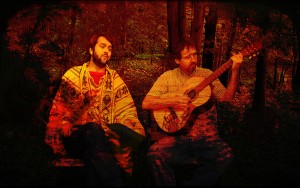 Brother Earth‘s ‘Out Like a Lion’ from their recent album Positive Haywires is as arresting as it almost not even there. As if breathed into existence by a group of slacker ghosts, the song lilts and turns, crashing into furniture but never losing focus on some hidden goal. The incantatory vocal, the tugging nylon guitar and the insistent percussion are reminiscent of Pram at the height of their craft, yet this song is something else again and very much it’s own strange and wonderful beast. If this doesn’t soundtrack an episode of True Detective there is no justice in the world.
Brother Earth‘s ‘Out Like a Lion’ from their recent album Positive Haywires is as arresting as it almost not even there. As if breathed into existence by a group of slacker ghosts, the song lilts and turns, crashing into furniture but never losing focus on some hidden goal. The incantatory vocal, the tugging nylon guitar and the insistent percussion are reminiscent of Pram at the height of their craft, yet this song is something else again and very much it’s own strange and wonderful beast. If this doesn’t soundtrack an episode of True Detective there is no justice in the world.
It was a no brainer that a collaboration between Robert Pollard collaborator and GBV producer Todd Tobias and Steve Five of The Library Is On Fire would produce something new and wonderful but Positive Haywires exceeded even my own extremely high expectations. Dig it!
Sound and Scene with Music Supervisor Steve Griffen
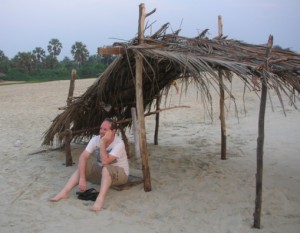 While few would dispute the importance of music in film and TV, I wonder how many outside the industry understand the machinations and the people that make it happen? Cue the music supervisor, who acts as a bridge between the vision and the music, and on a more practical level, the label/artist and the director/producer.
While few would dispute the importance of music in film and TV, I wonder how many outside the industry understand the machinations and the people that make it happen? Cue the music supervisor, who acts as a bridge between the vision and the music, and on a more practical level, the label/artist and the director/producer.
Steve Griffen has worked as a music supervisor in the US on such diverse projects as It’s Always Sunny In Philadelphia, Hot Tub Time Machine 2, We Are Marshall, the upcoming Mr Robinson (starring the awesome Craig Robinson), and many more. We’ve had the pleasure of working with Steve on the 30 Days In May documentary, which features nine songs from the Hidden Shoal catalogue, and we know he’s an in-demand, busy man, so we thank him greatly for taking the time to answer the following questions:
How did you get into music supervision?
It was actually forced onto me…somewhat. I worked primarily as a music editor in the beginning, and was editing on a television show when the network tried to force all of the shows to start using in-house music supervisors by not allowing supervisors in their budgets. The producers were used to having a supervisor attached to the production and offered me a raise to handle the supervision (since I was already employed as the music editor). There is a lot of crossover between editor and supervisor responsibilities, and the in-house supervisors did the ‘heavy-lifting’ when I called on them, so it made the transition somewhat painless.
What’s a day in the life of a music supervisor like?
The day always starts with reading a lot of emails over coffee. When I have time, I download the new music sent to me and try to give it a listen while travelling. I may have spotting sessions, concept meetings or mixes to attend. Whenever something music musical is taking place on the set, I am usually there as well. The rest of the time is spent auditioning songs against scenes, drafting requests and licenses or handling music editorial, which I also do on most of my projects. I go out to see bands a few nights a week as well in an attempt to stay current. One of the job perks is getting tickets to most of the shows that are happening every night in L.A.
I realise this must vary from project to project, but is there usually a specific point in the production process where you’re brought in? Does the point at which you join a project affect your approach?
It varies with each project, but I like coming in at the scripting phase. That allows me to avoid licensing pratfalls early on take part in a musically creative component of the job. If I get brought in after something is already shot or edited with music attached, the job is more about doing my best to fit the existing music into the budget or finding replacements for what cannot be licensed. Nobody is ever happy having to replace the music they have been living with, so those jobs can be problematic.
What’s been your favourite music placement and why?
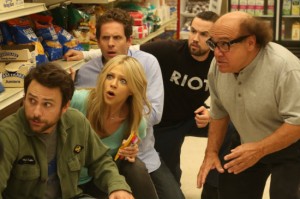 For the 100th episode of ‘It’s Always Sunny In Philadelphia’, they shot an intricate ninja fight sequence. We spent a lot of time trying out different songs for it and really loved “Smack My Bitch Up” by The Prodigy. There was a little back-and-forth with the band initially since they did not know the show, but after we forwarded them some episodes, they agreed. The publishers and label are all great people to work with, and the song worked on so many levels with the obvious nod to ‘Charlie’s Angel’s’. Plus, the song was misunderstood by a lot of people who took offense to it when it was released, similar to how ‘Sunny’ is often received.
For the 100th episode of ‘It’s Always Sunny In Philadelphia’, they shot an intricate ninja fight sequence. We spent a lot of time trying out different songs for it and really loved “Smack My Bitch Up” by The Prodigy. There was a little back-and-forth with the band initially since they did not know the show, but after we forwarded them some episodes, they agreed. The publishers and label are all great people to work with, and the song worked on so many levels with the obvious nod to ‘Charlie’s Angel’s’. Plus, the song was misunderstood by a lot of people who took offense to it when it was released, similar to how ‘Sunny’ is often received.
Without telling tales out of school, what was your hardest sync?
I’d have to say “Mama Said Knock You Out” by LL Cool J. There are a lot of samples in that track and even the samples have other samples in them. The pile of paperwork that it created made me feel guilty of deforestation.
Do you ever have to argue the value of a particular song to a director?
Constantly. It’s rare for everyone on a project to see eye-to-eye on music. It can be a polarizing topic that everyone wants to weigh in on.
I’ve heard it said, partly tongue in cheek, that music supervisors are the new A&Rs, and I know that many enjoy the ability to bring new music to new ears. Has this changed the way you think about your role or your choice of music in any way?
I don’t think my though process has changed because that’s how I’ve always viewed the role of a supervisor. I transitioned out of the record industry into TV/Film and had the chance to see guys like Danny Bramson doing more for the artists I worked with in the 90’s than the A&R department. I love seeing bands break after a great placement in one of my shows. It makes me feel still connected to the record industry in a small way.
How do you find the music you need for a project? Do you scout for music outside of a project to keep things tagged for future projects?
The music comes from all over the place, usually. Raiding the iTunes playlists of the interns on the show, seeing new bands in L.A., temp music from the editors, music scripted into the scene, etc…
I don’t really tag things for the future because that never seems to work out. Same with scripted music. It rarely ends up in the final cut. Producers and directions want to hear options and opinions from others. I have a somewhat photographic memory for songs so I’ll watch the scene down without music once it’s cut and sometimes I just know the song that’s needed. Then we are back to topic #6 above where I have to fight to keep it.
Can you tell us about the upcoming Mr Robinson project? (We’re big Craig Robinson fans!)
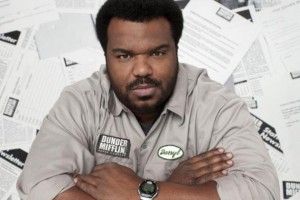 The pilot for that was done before I started ‘Hot Tub…’ and it’s still not in production! It’s supposed to be a mid-season replacement for this year so I expect it to start up soon. I can tell you that it’s based mainly on Craig’s real life as a struggling funk musician when he was starting out. He played on the recordings we did for the pilot and I engineered/produced those sessions. Hoping that his music remains a big part of the final show because I would love the chance to utilize my engineering skills regularly. Record budgets don’t usually allow for time in big studios anymore so the only way I get to sit behind a nice recording console is when I’m recording for TV/film projects.
The pilot for that was done before I started ‘Hot Tub…’ and it’s still not in production! It’s supposed to be a mid-season replacement for this year so I expect it to start up soon. I can tell you that it’s based mainly on Craig’s real life as a struggling funk musician when he was starting out. He played on the recordings we did for the pilot and I engineered/produced those sessions. Hoping that his music remains a big part of the final show because I would love the chance to utilize my engineering skills regularly. Record budgets don’t usually allow for time in big studios anymore so the only way I get to sit behind a nice recording console is when I’m recording for TV/film projects.
What’s spinning on Steve Griffen’s turntable at the moment?
Literally on the turntable? I think that’s probably “Dark Side of the Moon”, but the turntable is pretty much there as a conversation piece in my office. The top 10 recently most played songs on my iPhone are from Muse, Jimmy Eat World, Tame Impala, The Roots and Jack White. Okay…there’s a Tears for Fears song on the list too. Not sure how that fits into the above list.
Featured Track – Down Review ‘Anything is Everything’
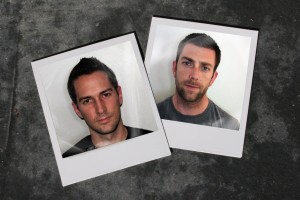 This week’s featured track comes to us from Down Review, the sublime collaboration between Medard Fischer (Arc Lab) and Tim Arndt (Near The Parenthesis). Their 2009 EP From Here, For Anyone was everything fans would expect from the meeting of these two musical minds and much more. The lead track ‘Anything is Everything’ squeezes everything that is good about both artists (believe me that’s a lot!) and gently expresses the pressure across the near 6 minutes of its luscious ambient electronica landscape. It’s impossible for me not to muse around ideas of travel and movement, both spatially and emotionally, when listening to this song. I believe we described this song as “a post-midnight drive through a flaking neon city” 5 years ago and that well and truly still works for me.
This week’s featured track comes to us from Down Review, the sublime collaboration between Medard Fischer (Arc Lab) and Tim Arndt (Near The Parenthesis). Their 2009 EP From Here, For Anyone was everything fans would expect from the meeting of these two musical minds and much more. The lead track ‘Anything is Everything’ squeezes everything that is good about both artists (believe me that’s a lot!) and gently expresses the pressure across the near 6 minutes of its luscious ambient electronica landscape. It’s impossible for me not to muse around ideas of travel and movement, both spatially and emotionally, when listening to this song. I believe we described this song as “a post-midnight drive through a flaking neon city” 5 years ago and that well and truly still works for me.
Enjoy.
Three Questions With Craig Hallsworth
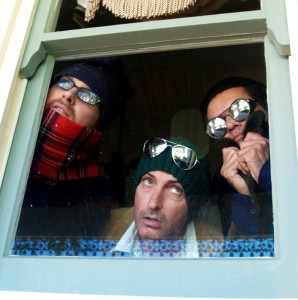 In this, the second of our Three Questions features, we focus our spotlight on Craig Hallsworth of Tangled Star and The Slow Beings, and previously such pivotal Perth outfits as The Bamboos and The Healers. His last release under the Tangled Star moniker, Let’s Adjourn To The Garden, is the perfect example of his innate sense of melody, composition and wordplay. It’s all wrapped in the guise of rock’n’roll, buts it’s something else if you listen closely enough. Anyway I, and many others, could go on and on with praise for this man and his music.
In this, the second of our Three Questions features, we focus our spotlight on Craig Hallsworth of Tangled Star and The Slow Beings, and previously such pivotal Perth outfits as The Bamboos and The Healers. His last release under the Tangled Star moniker, Let’s Adjourn To The Garden, is the perfect example of his innate sense of melody, composition and wordplay. It’s all wrapped in the guise of rock’n’roll, buts it’s something else if you listen closely enough. Anyway I, and many others, could go on and on with praise for this man and his music.
So without further complications we ask Craig to reach into the bag and pull out three questions.
Which artist would you most like to cover one of your songs and why?
I’d like MGMT to cover ‘Attic Space Conversion #1‘. They’re smarter and more talented than me, and they’d have the resources to do a better job than me. It’s a long song of many different parts, almost like a medley of parts of several different songs, and they do that kind of thing brilliantly, notably ‘Siberian Breaks’ from their second album Congratulations.
Then I’d like Nico and the Velvet Underground to do tosleepingpeople, just because she could sing a toothpaste commercial and lend it a decadently cool gravitas, so she might be able to do the same for me.
If you were writing a soundtrack/score, which director would you most like to work with?
There’s a Thai director by the name of Apichatpong Weerasethakul who made a Palme D’or winning film titled Uncle Boonmee Who Can Recall His Past Lives. The strangeness of this film is so natural and beautiful and true, the poetry of it is the poetry of a haunted jungle beyond our banal Western concepts. The film ends with a rather awesome guitar-driven pop song sung in Thai by Penguin Villa.
What’s the best show you’ve ever been to?
I find I only remember moments here and there. One was the Old Melbourne hotel about !984. The Scientists started with ‘We Had Love’. It had that sort of tension building intro, then it just exploded. It really was like a rock’n’roll bomb going off. Another memorable show was My Bloody Valentine at the same venue several years later. Real fans were mostly disappointed – it was a blaring mess, you couldn’t hear any vocals or anything. I wasn’t really a fan, but I found it kind of sublime. A completely different kind of show was Jonathan Richman at the Red Parrot about ’83. It was just Jonathan with a guitar, and a packed venue hanging on everything he did. At one point, he put his guitar down in the middle of a song and rolled around on the floor, while the audience continued to clap along in time. Then there was the Cramps at the same venue in about ’87 (which my band at the time, the Bamboos, supported). Lux Interior came on in a shiny gold suit looking like Elvis from hell. By the end he was climbing the PA stacks in his underwear, mascara running down his face, swigging red wine from a bottle.
Sound and Scene with Drew Sullivan of Slow Dancing Society
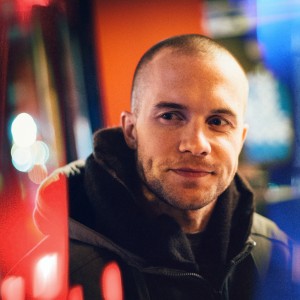 Slow Dancing Society is the moniker of ambient composer and sonic wunderkind Drew Sullivan, who’s responsible for some of the most ethereal and compelling pieces in Hidden Shoal’s catalogue. Through six albums over eight years, the evocative textures in Sullivan’s body of work play out like soundtracks to movies that don’t exist. From the nostalgic crescendos of Priest Lake Circa ‘88 to the Eno-meets-Vangelis minimalism of his latest record The Cogent Sea, Sullivan is a master of manipulating mood and emotion through sound. In this new feature on Hidden Shoal, our own Matthew Tomich spoke with Sullivan about his favourite film soundtracks.
Slow Dancing Society is the moniker of ambient composer and sonic wunderkind Drew Sullivan, who’s responsible for some of the most ethereal and compelling pieces in Hidden Shoal’s catalogue. Through six albums over eight years, the evocative textures in Sullivan’s body of work play out like soundtracks to movies that don’t exist. From the nostalgic crescendos of Priest Lake Circa ‘88 to the Eno-meets-Vangelis minimalism of his latest record The Cogent Sea, Sullivan is a master of manipulating mood and emotion through sound. In this new feature on Hidden Shoal, our own Matthew Tomich spoke with Sullivan about his favourite film soundtracks.
Edward Scissorhands
DS: In chronological order that’d be the best one, because that was probably my first introduction to really enjoying score music for films. I was always into movies at a young age so I always felt like I was aware of what was going on musically. Because when you’re six, seven or eight, you’ve got your favourite movies, and I kind of tended to watch a lot of adult movies. My dad would watch them with me and I attribute a lot of my love for things of the ’80s to my dad. And my mom – she played a lot of ’80s music for me. I’m 34, so in 1984 I was 4 years old, so a lot of the movies of that time that I really like I should not have ever seen. So dad watching them with me and always saying, “Oh, that doesn’t really happen that way” – it was funny, I had a really good sense of what was real at a young age.
But back to that movie – Danny Elfman I think had a kind of – and still does – a very unique style. He’s kind of ran his course; it’s always the same sound now, but it was this very phantasmic, fairytale sort of sound, and I think I attribute a lot of my ideas for melodies and usage of certain sounds like choirs and those kinds of vocal overtones and bells from him and from that soundtrack. I still love that soundtrack. It’s funny, I had it on tape of course at the time, and they always say you wear it out, but I truly did wear that tape out. But it made me think that if you ever listen to a brand new cassette tape, it doesn’t sound like a warbly tape like all these new plugins make your old vintage music sound like. And I think the reason why people want that tape sound is that if you have an album or favourite music you wore the hell out of, it started to warble, and the tape started to disintegrate, and that’s why we have that sound. It’s almost more about the memory of a sound than the actual quality because tape was a quality device back then. But I loved that soundtrack, I still listen to it today.
HS: When you’ve listened to a soundtrack so much, are you almost listening to it first than watching it – rather than waiting for a scene, you’re waiting for a refrain or a melody?
DS: Yeah. It’s funny – I’m kind of like that with a lot of movies, even modern ones where I know the score really well. I tend to go watch a movie because of the composer, and I’ve been turned on to a lot of movies because of composers that I probably wouldn’t have normally chosen to see. So I tend to be anticipating that next cue in the movie, and it’s a weird way of watching a movie. I don’t think a lot of people probably view movies that way. A lot of composers will say, “If you don’t recognise that my music is playing in the background then I’ve done a good job because I’ve just made that a seamless moment where the music has underscored the scene.”
HS: One thing I noticed with that and with a lot of Danny Elfman soundtracks I’ve heard is the sense of a dark, carnivalesque sound to it – it’s playful, but there’s that eerie undertone.
DS: Absolutely. And it really fits Burton’s vision really well. You see a lot of composers – and we’ll talk a little later about Cliff Martinez, he and Steven Soderbergh have worked so many times together – and I think there are certain directors that just really mesh and the sound of someone’s music just works with their vision. I just watched Beetlejuice last night, it was on TV, and again it’s that quintessential Danny Elfman sound – it’s a very playful but dark sound. He did a score for a movie called Nightbreed which really flew under the radar, and that’s a really good score that no one really talks about. It’s very tribal. The movie is about this tribe of monsters that live underneath a graveyard, which sounds really stupid when you say it, but it’s a Clive Barker story and it’s really good. But his score in that is very good, very nice. Not as playful – it’s much more the darker style.
HS: Listening to Edward Scissorshands and then listening to your stuff afterwards, I was expecting to hear some of those influences, but it wasn’t really coming through, because your music is a lot more contemplative, serious, and for a lack of a better expression, highbrow. Is Nightbreed closer to the tone that you go for or closer to what you take from Elfman’s music?
DS: You know, I was laughing to myself the other day about this, where I have all these influences that I state all the time, and a lot of times they won’t shine through in what I do. One of my favourite albums that I was really passionate about was the Priest Lake Circa ‘88 album and I tell everyone that that was my attempt at making a hair metal album. Probably three quarters of the album was original material that I had sent to Cam Merton [at Hidden Shoal] and he was like, “No way is this going to work.” So when I look back on it, it was a pretty ambitious move to make such an album. So what I did was the typical re-editing and mixing and washing it in reverb and delay and it turned out to be way better than what I initially went out for. It was a perfect thing to happen because when I listen to that album now, I can totally hear hair metal music in it for me, because there’s all sorts of soaring guitars in there that were delayed and reverbed as I’d said, but it takes on the way we remember music as opposed to the way the music actually sounded.
It was kind of like Priest Lake was supposed to be a memory of a time in my life. And it’s going to be like all memories – it’s going to be fuzzy around the edges, a lot of it’s going to be probably wrong from the way it actually happened, and everyone’s interpretation’s going to be a little different. Because when I still listen to hair metal music today, it brings me back to those moments of my childhood, but it doesn’t quite sound as grand and as luxurious or epic to me as it did then. And that’s understandable, but I think that’s what I try to do with most of my influences – take the way they made me feel – and that’s probably where the contemplative tone comes through. You’re longing for those days of when life was just a little bit easier and there were no diapers.
Stay
DS: That’s a good example of how I say that I found out about the movie through the people that did the score. The guys that did that – Ashe and Spencer – they’re kind of a unique scoring company because there are like 8 to 15 people for that company. Ashe and Spencer are the two main original guys, but they have these revolving musicians that come through and do stuff for them. It’s a very co-op sort of vibe. They did a movie called Monsters Ball with Heath Ledger and Billy Bob Thornton, and that was a great movie and I really liked that score, and because I saw on IMDb that they were scoring Stay, I went to go watch it one night and that movie turned out to be just an incredibly visually stunning movie, and their music was so perfect for it. The way in which each scene melded into the next scene was like – there’d be a scene where they’re driving by the Brooklyn Bridge and one of the main – I guess I’d say tower portions of that bridge – melded into the next scene, which was a chess board with a Brooklyn-themed chess piece. And it wasn’t cheesy; it was really well done CGI. So the movie is a very dream state movie that I won’t spoil it because the ending is necessary to understand the whole vibe of the movie, but those guys on that movie, their score was so good.
That score was in 2004 and that was right around when I was working on The Sound of Lights When Dim, and so I didn’t really have the wherewithal or I guess the experience to really know how to manipulate sound as well as I’ve gotten to the point now over the experience of time, but they had a behind-the-scenes featurette on that score which is on the DVD about how they did the music, and it was really impressive and amazing how they made a lot of their sounds. Very organic, lack of plug-ins. One particular thing that stuck with me is they took a piano and recorded every single note through an old tape machine, and one of the tape heads was rotten and broken, and they would actually touch the tape throughout each piece. And so then they had every key of the piano recorded, and then they would map those audio files to a MIDI keyboard. Then they played it through a plug-in of sorts or a sampler, but each key would have a very unique characteristic when you’d play a chord, and I guess the piano was kind of – it wasn’t even like a warble, it was just this very otherworldly sounding piano, and it’s just amazing.
HS: That one more so than the Elfman soundtrack, I could hear a lot more of that in your music. And I like how it had that scrape of metal synthetic sound to it. You mentioned the organic approach they took – is that something you try to do a lot of?
DS: Absolutely. I don’t have as much of an ability to do field recordings or record pianos that way, so I probably tend to do it a lot longer – or at least my workaround, for lack of a better word – is a lot longer than it probably needs to be, because I don’t have a piano. I have a VST of a piano so I’ll take notes and kind of record those notes and mangle it a little with plugins that I have, and then put it back into the track. So I may have 15 individual tracks to make one piano chord just to try to make that sound. So it’s a lot harder workaround, but I don’t have the tape machine or the microphones to do that.
Traffic
DS: That came out a couple of years before Stay but I remember seeing that movie – because it was a pretty big, popular movie at the time – and I remember the very end of the movie, it wasn’t even a Cliff Martinez song, it was ‘An Ending (Ascent)’ by Brian Eno. And that was probably the first time I’d ever heard that song, actually, which is funny, because everyone always assumes as an ambient artist that Eno is a big influence, and I didn’t discover him until very, very late into my musical ambitions. And he still is, but that song is just one of those perfect songs where the melody and the chord progression is amazing. It’s very simple. I mean really, there’s one instrument – I’m sure there are probably a couple of different tracks and layers, but it’s really just one synthesizer. There’s not a lot of layers and I tend to be excessive in layering of music – you know, the whole less is more – but that song is perfect. So that really got me to pay attention to the score and go back and hear it. That was what began my love affair with Cliff Martinez, is that score.
HS: Interesting you mentioned Eno and that minimalistic take, because he composed the Windows 95 start-up sound. He often worked on that microscopic level where you’re dealing with fractions of a second. You said that you work on the opposite to the less is more scale, but do you ever get that meticulous?
DS: Well yeah, because what I’ve found with a lot of my favourite musicians that aren’t influences – just music I like to listen to – is that the more and more, you can always pick up something from a rock band or even a house track in the way it’s produced and the way the sounds work together – that timbre, so to speak, of the instruments. And I find that a lot of times, these sounds that we think we’re hearing as another layer is not so much another layer of music but actually the two tones of each individual instrument playing together, and even that sort of silence in between those instruments serves as an instrument in and of itself; it kind of fills in those gaps. So I try to really approach those minimalistic things and really get back to it. Once it gets too busy, it’s just that – there’s too much going on; you can’t really focus on just the decay of a certain sound. And then at that point when you’ve got too much going on, it’s going to get muddy, everything’s going to start fighting for its own place in the mix, and you’ve just got a discombobulated sound. A good example on that Stay soundtrack is there are a lot of portions in that music where the piano note will just ring and then that note will decay and reverse and pull it back and pan it left. It’s taking one single sound and really abusing, so to speak, the nature of that one sound.
HS: In terms of how soundtracks and composers work – do you ever try and go less for, “I want this to sound like this,” but more, “I want this to make someone feel this way,” in a way that a composer would go for “here’s my visual accompaniment, here’s the feeling that we’re going for.” Do you find an equivalent to that approach?
DS: Yeah. I did a score for an independent film. It was called The Key. I got introduced to this guy by a friend of mine when I was living in Los Angeles and I’m not even sure where you can find it online. I’m sure you could YouTube it, it’s just called The Key, and it’s even on IMDb if you were to search through my name because I am tagged to that movie. So that was a fun experience where the director was sort of new, so there wasn’t really a big vision of what he wanted, which was helpful because I think that would be difficult to have to try to make a sound or a moment based on what you’re watching. Because in that experience, when he gave me the footage, it’s a very odd thing to watch a movie with no sound and no music. You feel very on the spot to create something that works with that, and I think that’s the beauty about a lot of scores – when you watch a movie and you hear the sound, you’re like, wow, I never would’ve thought of that sound in that moment but it works so beautifully. And I’m sure there was a lot of trial and error with that director and that composer to make that happen, and maybe it might have just been a magic moment.
For myself, because I don’t have that experience of working with directors – not yet, hopefully I will in the future – I probably always sit down when I write music trying to evoke a mood. It never feels forced. I think I would probably tend to kind of float in that melancholy, contemplative state as you said at the beginning of our conversation, but a lot of it kind of just develops over time. It’s funny because I’m not a generally contemplative person – of course I think we all kind of long for those days – but it’s almost a catharsis when you do music, when you do sad music or music that sounds contemplative, you’d think you have to be in the kind of doldrums to do it, but really, it’s that expression of it that I think by the time you’re done with it, you don’t really have that burden anymore. I guess I kind of sit down trying to evoke a mood, and very rarely do I ever say I want it to be this way – that I want it to be sad or I want it to be happy – because with anything artistic, you can’t just sit down and do something. It’s usually got to be when inspiration strikes or when you get a certain kind of sound in your mind that you want to go record. And depending upon how you feel that particular day, what occurred, you may have a completely different direction of how the song develops.
HS: You mentioned before on Priest Lake Circa ’88 you were working from a memory and a feeling for a particular time – I guess in a way that is almost like working to a soundtrack, you’ve got a distinct idea of a particular emotion you’re trying to evoke. Has that been something you’ve used as a jumping point for your other albums?
DS: No actually, it’s funny. So for a timeline: The Sound of Lights When Dim was what all artists say: I had my whole life to write that album. That was a collection of songs that had probably been bubbling for years. Then The Slow and Steady Winter and Priest Lake Circa ’88 – those two albums together were actually the album that I sent to Cam as my second that he said no way on because it’s the full-on ’80s hair metal. And so those albums are what I reworked into what they are now. Slow and Steady Winter was actually re-edited over the winter, and I think because of that, that album has a very sombre vibe to it, and I would definitely say that because of being told no, so to speak, that kind of sent me into this sort of – not depressive state, but like, “OK, now what?” I’m in this nuclear winter in Washington when nothing happens, so that album is what took on a lot of that icy, reverbed, lengthy sound. Priest Lake Circa ’88 – those tracks were still ones that I couldn’t quite make as cold sounding, so they still had that very warm, I’d say summery kind of rock vibe, and as I slowly came out of that winter, that vision really held tight and I just worked on it.
But albums nowadays – I’ve noticed the last three albums, I never really have a vision. It’s always one track is what gets created first, and the whole rest of the album kind of centres around that track. Which in a way is kind of a funny – or an ironic statement – because I’ve heard a lot of composers say, when they start working with a director, the director will have scenes for them to view and there’ll be temp music – songs that they’ve used from another film, or they’ll say “I’m looking for something like this” – and then they create this one track where the director says, “That’s it, that’s the sound,” and everything revolves around that. In most soundtracks there’s a common theme or a cue or a certain melody that is built upon or deconstructed, so that’s probably how a lot of my last three albums have worked. And the last three albums have really been a much more dive-into, score-like music, so I guess that’s an ironic twist of fate to how I approach it now. Nowadays there’s one song that tends to be the ground zero and everything else builds around it.
HS: What was that ground zero song on The Cogent Sea?
DS: That was probably ‘Coming Back,’ the fourth track on the album. That was the big one for me. That one really kind of started it, because there’s a sort of just a staccato guitar chime in the beginning, and then the subtle melody notes over it, and that pulsing arpeggio bass in there. And that’s really what kind of sparked the rest of that vintage ’80s sound – it kind of has an almost sort-of cop drama ’80s sound to it, you know, with that menacing bass that typically underscores a very intense moment when they’re looking at a file. I think, again, a lot of those influences come to me from those ’80s films and sounds, but I didn’t want it to be super-sharp staccato bass like in ’80s movies; I rounded it off with a bit of a filter to give it more of that modern, textural quality.
HS: I was surprised listening to The Cogent Sea that you didn’t pick something composed by Vangelis because I hear a lot of that aesthetic in it.
DS: The song ‘O Captain! My Captain!’ with that big, thick synth – that was really prevalent on a lot of the Blade Runner stuff that he did. That soundtrack was probably a pretty big soundtrack over the last two albums in a tone and in structure – because if you look at a lot of my older albums, there isn’t a lot of synth work. There’s a lot more guitars being manipulated, whereas the last two albums, I really started to dive much more into synths that you wouldn’t hear on a lot of those previous albums. For me, I always loved very warm, organic sounds, and I think there’s a sort of giving up that prejudice of synthetic sounds. Which is funny because I love synthpop music, but I never wanted to see that in my music for some reason, but then there was just this kind of turning point for me during the making of Laterna Magica where I started to use very quintessential chime sounds that were from an old Jupiter, and I love those tones now. I’ve started to use them a lot more, and that’s why I think you’ll see a lot more synth work on this new album than anything before.
HS: Are you working on any new material now?
DS: Right now Jarrod from City of Satellites – which is another band I’m in with Thomas – we’re working on the new album for City of Satellites, and Jarrod and I also have a side project called The October Solution and we’re working on that new album, so there probably won’t be a new album from Slow Dancing Society for at least a good year or two. It could be sooner – you know, it’s funny, a lot of times these albums, like I said a moment ago, when you get that one track that’s the ground zero, the rest just falls into place. There’s always that moment of panic when I’m working on tracks and nothing’s coming together, there’s no vision and I’m like, I don’t know when a new album’s going to be ready. But then all of a sudden one track happens and it just explodes. But I do have an EP that was kind of some outtakes of sorts from The Cogent Sea that just didn’t really seem to fit the overall vibe of that album, and by themselves they’re a much more cohesive unit. There are about six tracks which will probably be released late summer, early fall, maybe winter at the latest. The songs are all done, there’s just the matter of a release time with Hidden Shoal.
Michael Clayton
DS: That’s a great score. That was probably more score-like than the other ones. Traffic was very guitar-based with synthesizer tones and washy sounds. Same with Stay, that’s very much more piano-based with some guitar tracks in there. Whereas Michael Clayton – that’s quintessential percussion, those very filtered deep rumbling bass loops and percussive notes and beds. I saw that movie again too because of James Newton Howard, and I’ve seen a lot of his stuff and I like his big, grand-sounding scores. But that score is really one of those very minimal scores again – there aren’t a lot of big orchestral moments. It’s very otherworldly and it’s got that tension of sorts that I tend to like and that I’m leaning more towards. Because I’d say Laterna Magica was probably a turning point in Slow Dancing Society’s overall sound where it got a little darker and not as ethereal, so that score was really a big influence for that, that idea of tension and a thriller type of vibe.
HS: There’s a great sense of urgency and it’s almost hard to listen to it without feeling a little uneasy. It’s hard to listen to it separately, whereas something like Danny Elfman, you can listen to it separately and enjoy it.
DS: Absolutely. And I love that score. And again, I think the thing too is that a lot of these scores where you mentioned earlier you don’t see it shining through in my music, what I tend to take from music is less about the particular artists and their sounds or style, but the way in which certain sounds sound. If you listen to that James Newton Howard score, the way in which the drums sound very almost watery and filtery, there’s a certain texture to them and I really like that sound, so I try to implement those kind of sounds into say, a song on The Cogent Sea like ‘Reach Out,’ which is really just an 808 machine, but I try to make those drums sound similar to the way they sounded on that score, so there’s no urgency or unease in that sound at all, but the sound in the way in which those sonics were, that’s kind of what I go for a lot of times.
Into Forever
This is not a film soundtrack as such but it feels like the soundtrack to something. Into Forever is the work of Manual (aka Jonas Munk) and Icebreaker International and is one of Munk’s most underrated and hidden albums. If you read the liner notes it talks about – and this is totally a fake story, but it’s such a cool story the way they did this as a marketing ploy – is that there’s some sort of science academy in some far Eastern European country that funded the making of this album, and the album will be played on an infinite loop on this satellite that they’re going to launch into space with the hopes that the sound will travel for eternity into space, that any planetary being that reaches these sounds will hear them. And it was a very cool idea. If you look at the song titles there’s ‘The Countdown,’ so that’s the launching of the satellite, and then there’s ‘The Outer Rings’ and ‘The Inner Rings,’ so it’s like the journey of this satellite travelling through space and it’s a gorgeous, gorgeous album.
People say it’s like space rock and it’s got a definite feel that you’re suspended in space listening to that album. Probably even more so in my opinion than ‘An Ending (Ascent)’ from Brian Eno which came from the Apollo soundtrack and the score to that movie about the Apollo space mission. Because that album with Eno was a little bit more – and it’s probably subject to the time and the sounds that were available – it has a little bit more of, I want to say cheese factor, but some songs just don’t seem to work as well for what’s going on, whereas Into Forever, you can put that on and just completely drift away into another world. It’s an amazing album.
HS: Do you try to work in that narrative sense when you’re sequencing tracks?
DS: The thing that’s funny about that is you would think that the ground zero could either be the alpha or the omega – the beginning of the album or the end of the album, like the finale, or even the arc of the story. But really, it builds less in a narrative sense for me. Sometimes it will build in a narrative sense, I’ll really kind of try to create a story, but the way in which songs flow together is almost more happenstance where, let’s say when working on ‘Coming Back,’ there might be four or five individual tracks within that song that didn’t quite make the final edit, but there’s still something very textural about them that I liked, so those will develop into another song, and because of the way in which they sounded was within the same kind of cadence or even the key of a song like ‘Coming Back,’ that would make it very easy to be the song before or after that on the album.
One trick of the trade for me is I put all my songs once they’re done onto shuffle on my iPod. The Cogent Sea – the funny thing is, the actual tracklisting or order was from a total happenstance randomization on my iPod. It just worked. I listened to probably 30 incarnations of that. First I try to put them together myself, as in, “Here’s how I think they should sound.” Sometimes it feels forced, sometimes there’s a bit of a jump here or there or something doesn’t feel right, but this one lucky afternoon, that album order it played was perfect. So somewhere deep in the macro algorithm of an iPod is how that happened.
HS: What’s the overall feeling or memory that you’re trying to translate or communicate with The Cogent Sea?
DS: I think The Cogent Sea probably for me is the culmination of all styles of music that I loved as a kid and an adult. I have a pretty wide range of musical tastes. And I always dislike when people say “I have an eclectic taste in music” because I think that’s just kind of a little, trying to sound –
HS: It’s lazy.
DS: Yeah. There’s nothing wrong with saying that you like this style of music and only that. There’s nothing wrong with that at all, but I think people feel that they need to like a lot of different music. For me it’s less about liking all styles of music and more I love sounds and textures and how they work together.
One sound in particular is country music. I can’t stand country singers, but I absolutely love the sound of Fender Telecasters which are a very common guitar used in country music, and Rhodes pianos and steel guitars or pedal steels. I love the sounds of those textures so I like some country music in that sense. But I think with The Cogent Sea, I was trying to make an album – and not even trying, it was really just what came out, actually – of music that I just love and listen to.
I think nowadays, if you look at the last three albums from the first albums, I always feel that an artist’s first couple of albums are them trying to find a place and fit in somewhere. And obviously at the time they’re very much into the music that they’re writing and playing and producing at that time, but it’s always the torturous thing that happens to artists as they get older is that they’re not going to make an album that they did five or ten years ago today. They might, but it might be forced, and that’s where I feel the progression of what I do now musically has really started to show more so into what I listen to. Back on The Sound of Lights When Dim, all I listened to was IDM or ambient music, whereas nowadays with The Cogent Sea and listening to a song like ‘Reach Out’, you can tell that I was probably listening to a lot more Phil Collins or Erasure at the time, probably because I remember those bands. My mom played a lot of music when I was young, she was always listening to MTV or having it on the TV when I was five or six, so again I owe that to my parents a lot – that exposure to those music and those different styles and scenes.
Featured Track – City of Satellites ‘BMX’
This week’s featured track comes via the wonderful dream-gaze of City of Satellites. ‘BMX’ from their brilliant debut album Machine Is My Animal is a sublime cut. The song hovers across beds of widescreen synths and levitating rhythm guitar while Jarrod Manual’s alto vocals weave through the mix. And then just when you’re set in the groove, in comes a dramatic change that never fails to bring me goosebumps. It’s such a beautiful pay-off and such smart and affecting songwriting. Be sure to also check out the brilliant music video for the track here.